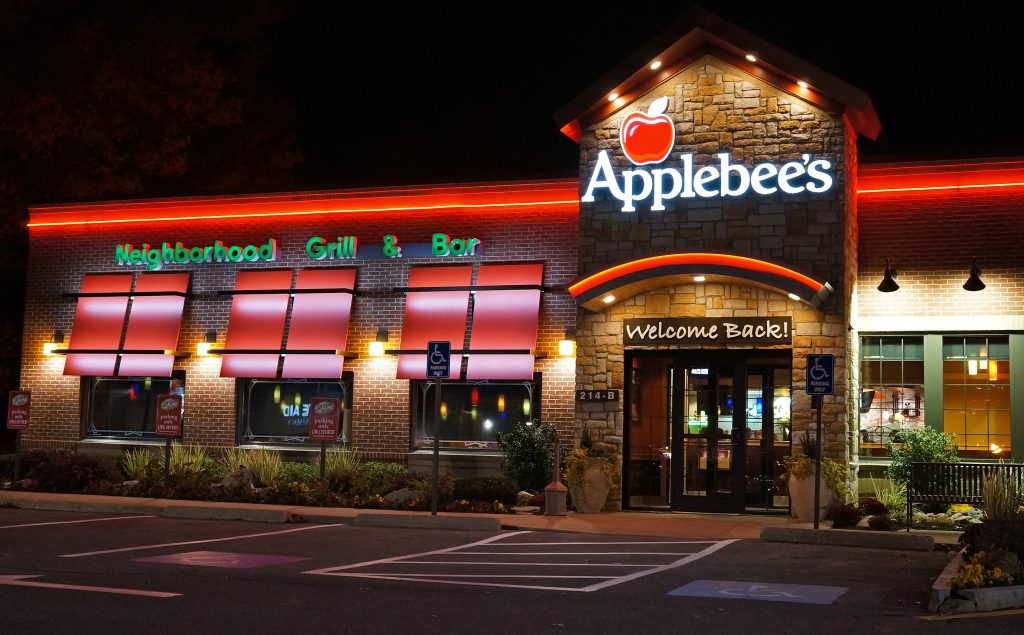FALSE: Ground Improvement Is Only Cost-Effective On Large Projects Due To Relatively High Mobilization Costs
Ground improvement can be a cost-effective alternative to excavate/replace, even on smaller projects, particularly if special measures are required for excavate/replace to be feasible such as excavation support, dewatering, and/or contaminated soil disposal.
Helical Drilling has successfully supported a number of small projects (<5,000 to 7,500 SF footprint) on Geopier® ground improvement elements. Read below to learn more about recent projects.
- Applebee’s (6,200 SF)
- Cumberland Farms (5,00 SF)
- O’Reilly Auto Parts (7,000 SF)
- Sunoco Gas Station (1,900 SF)
- Rousselot Clarifier Tank (1,000 SF)
APPLEBEE’S
- Location: East Boston, MA
- Technique: Geopier Impact® Rammed Aggregate Pier® Elements (RAPs) and Grouted Rammed Aggregate Pier Elements (GAPs)
- Building Footprint: 6,200 SF
Helical designed and installed a Geopier ground improvement system to support column footings and floor slab loads at the site of a new Applebee’s location being constructed at 100 Boardman Street in East Boston. Helical installed Rammed Aggregate Pier Elements (RAPs) and Grouted Rammed Aggregate Pier Elements (GAPs) to depths of 20 feet below grade to support the new 6,200 SF structure. The RAP/GAP solution was designed to limit total and differential settlement to less than 1-inch and ½-inch respectively.
This design/build ground improvement solution eliminated the need for over excavation and replacement of existing urban fill and organic soils.
Cumberland farms
- Location: Lancaster, MA
- Technique: Geopier Impact Rammed Aggregate Pier and Grouted Rammed Aggregate Pier Elements
- Building Footprint: 5,000 SF
Helical designed and installed a Geopier ground improvement solution to provide column footing and floor slab load support at the site of a new 5,000 SF Cumberland Farms store and gas station. GAPs (Grouted Rammed Aggregate Pier Elements) and RAPs (Rammed Aggregate Pier Elements) were installed to depths of 12 feet below grade. The GAPs and RAPs were designed to limit post-construction footing settlement to less than 1-inch and adjacent footing settlement to less than ½ inch respectively.
The subsurface conditions encountered at the project site included up to 8 feet of loose to medium dense silty sand, sandy silt or sand fill over an intermittent organic deposit with up to 4 feet of peat. Groundwater was encountered at 10 to 15 feet below the ground surface.
O’REILLY AUTO PARTS
- Location: Fitchburg, MA
- Technique: Geopier Impact Rammed Aggregate Pier Elements
- Building Footprint: 7,000 SF
Geopier ground improvement elements were installed to support column footings and floor slab loads at the site of the new 7,000 SF O’Reilly Auto Parts storefront. The Rammed Aggregate Pier ground support solution eliminated the need for over excavation and replacement of fill, while providing higher bearing pressure for spread footings and support for a slab-on-grade floor.
Subsurface soils consisted of 10 to 11 feet of very loose to medium dense sand or silty sand fill over medium dense sandy gravel. Groundwater was encountered between 6.5 to 9 feet below ground surface.
SUNOCO GAS STATION
- Location: Oxford, MA
- Technique: Geopier Impact Rammed Aggregate Pier and Grouted Rammed Aggregate Pier Elements
- Building Footprint: 1,900 SF
The site of a new Sunoco Gas Station required column footing, floor slab and retaining wall support. Helical installed Grouted Rammed Aggregate Pier Elements and Rammed Aggregate Pier Elements, eliminating the need for over excavation and replacement of existing fill, while providing higher bearing pressure for spread footings coupled with slab-on-grade floor support and settlement control. The RAP/GAP solution was designed to limit post-construction and differential settlement to 1-inch and 1/2-inch respectively.
Subsurface soil conditions included 6 to 7 feet of loose to medium dense sand, silt and gravel fill overlying an organic deposit up to 7 ½ feet thick consisting of organic silt and peat. Beneath the fill and organic deposits, medium dense sand was encountered. Groundwater was encountered at 3 to 4 feet below ground surface.
ROUSSELOT CLARIFIER TANK
- Location: Peabody, MA
- Technique: Geopier Impact Rammed Aggregate Pier Elements
- Tank Footprint: 1,000 SF
Helical completed the design and installation of the Geopier ground improvement system supporting the 1,000 SF tank, which was part of a stormwater pretreatment system upgrade project. Geopier Rammed Aggregate Pier Elements eliminated the need for over excavation and replacement of existing fill, delivered a higher bearing pressure and provided settlement control.
Subsurface soil conditions consisted of 8 to 12 feet of very loose to medium dense sand and gravel fill over 9 to 28.5 feet of sand and gravel. Groundwater was encountered at 8 to 10 feet below ground surface.





